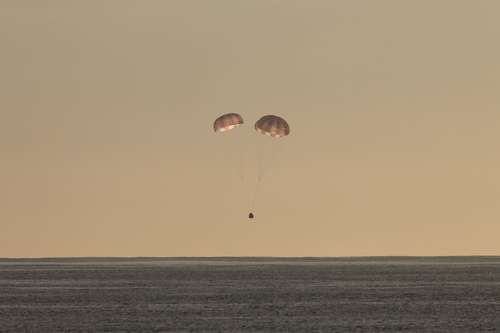Megalodon was the world's largest shark, with a mouth large enough to walk through and serrated teeth as large as your hand.
This fearsome apex predator, however, died out roughly 4 million years ago. What was the cause of its demise?
A study released today in Nature Communications reveals that other sharks, particularly great whites, feasted on megalodon's favored prey around the time it vanished.
According to research author and University of Frankfurt geoscientist Jeremy McCormack, this struggle for prey did not cause megalodon's demise, but was likely one of several factors that eventually reduced megalodon to a fossil remnant.
According to Erich Fitzgerald, senior curator of vertebrate paleontology at Museums Victoria, who was not involved in the study, megalodon's genuinely enormous dimensions didn't help matters either.
"All apex predators are on an ecological knife's edge," Dr Fitzgerald added.
"As they say, it's tough at the top."
Megalodon (Otodus megalodon or Carcharocles megalodon) had a long and successful existence. It existed between 20 million and 3.6 million years ago, according to fossils.
Megalodon possessed a cartilage skeleton, which decays rather than fossilizes, but its gigantic teeth survived the eons. These ancient chompers can tell paleontologists a lot about the huge carnivore. They're sharp and spiky, for example, making them ideal for shredding flesh.
The chemistry of megalodon — and other shark — teeth, on the other hand, can tell us more about what was on the menu at the time. Sharks, unlike humans, who only have two sets of teeth for the rest of their lives, constantly lose and grow new rows of teeth.
Zinc isotope ratio analysis
Chemical components from the shark's meal are incorporated into the hard enamel layers of these growing teeth. As a result, when those teeth fossilize, some chemical constituents are preserved and can be used as a proxy for their diet today.
Dr. McCormack and his team used a relatively new technology called zinc isotope ratio analysis to do this.
They shaved little chunks of enamel from the teeth with a dentist's drill. They next tested for two forms of zinc — one somewhat heavier than the other — and how much of each was present in the teeth using lab equipment that can identify molecules in a sample.
The zinc isotope ratio is then calculated. Dr. McCormack explained that a diet high in fish and squid would have a slightly different zinc isotope ratio than a diet high in seals.
"As you move up the food chain, the proportion of lighter zinc to heavier zinc increases."
The researchers first looked at 20 extant shark species' teeth to see whether they could correlate zinc isotope ratios to nutrition.
It was successful. The researchers then used the same method to teeth from 13 extinct shark species, including megalodon.
Megalodon and great white sharks were both consuming enormous, warm-blooded animals, most likely whales, around the time they became extinct.
This fits megalodon bite marks on fossilized whale bones, as well as the snapped-off tips of megalodon teeth still imbedded in them.
[caption id="attachment_37693" align="aligncenter" width="677"]

A megalodon tooth, left, and a great white shark's tooth on the right. The word megalodon means big tooth.[/caption]
So, what was it that killed Megalodon?
While there was probably overlap in megalodon and great white prey 3.6 million years ago, according to University of New England paleontologist Nicolas Campione, this rivalry was not the fundamental cause of the mega shark's extinction.
At the time, there was a lot more going on in the world.
"The heyday of megalodon was actually a pretty beautiful time, with pretty equable temperatures," Dr. Campione added.
"By that time, ice sheets had begun to form in Antarctica, so there was some overall global cooling, but it wasn't too awful."
Ice sheets expanded in both hemispheres as the Earth entered an ice age, disrupting ocean currents and reducing sea levels.
A megalodon needs a lot more food to feed a body three times the length of a great white shark, according to Dr. Campione.
"If they don't have access to the high-energy resources they require, their population levels begin to dwindle."
"We don't know how many babies Megalodon had or how often," said Dr. Campione, "but the larger you are, the more difficult it is to maintain a steady population."
 A megalodon tooth, left, and a great white shark's tooth on the right. The word megalodon means big tooth.[/caption]
A megalodon tooth, left, and a great white shark's tooth on the right. The word megalodon means big tooth.[/caption]




